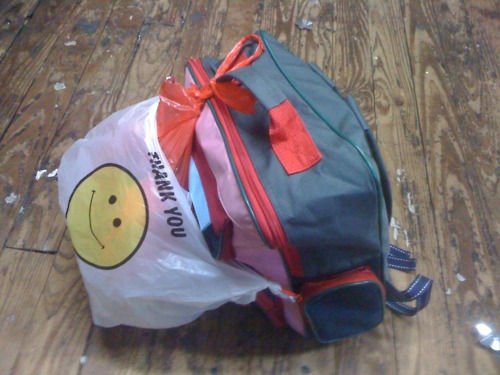Barriers to Banking Push Queens Immigrants Towards Alternative, Financial Services
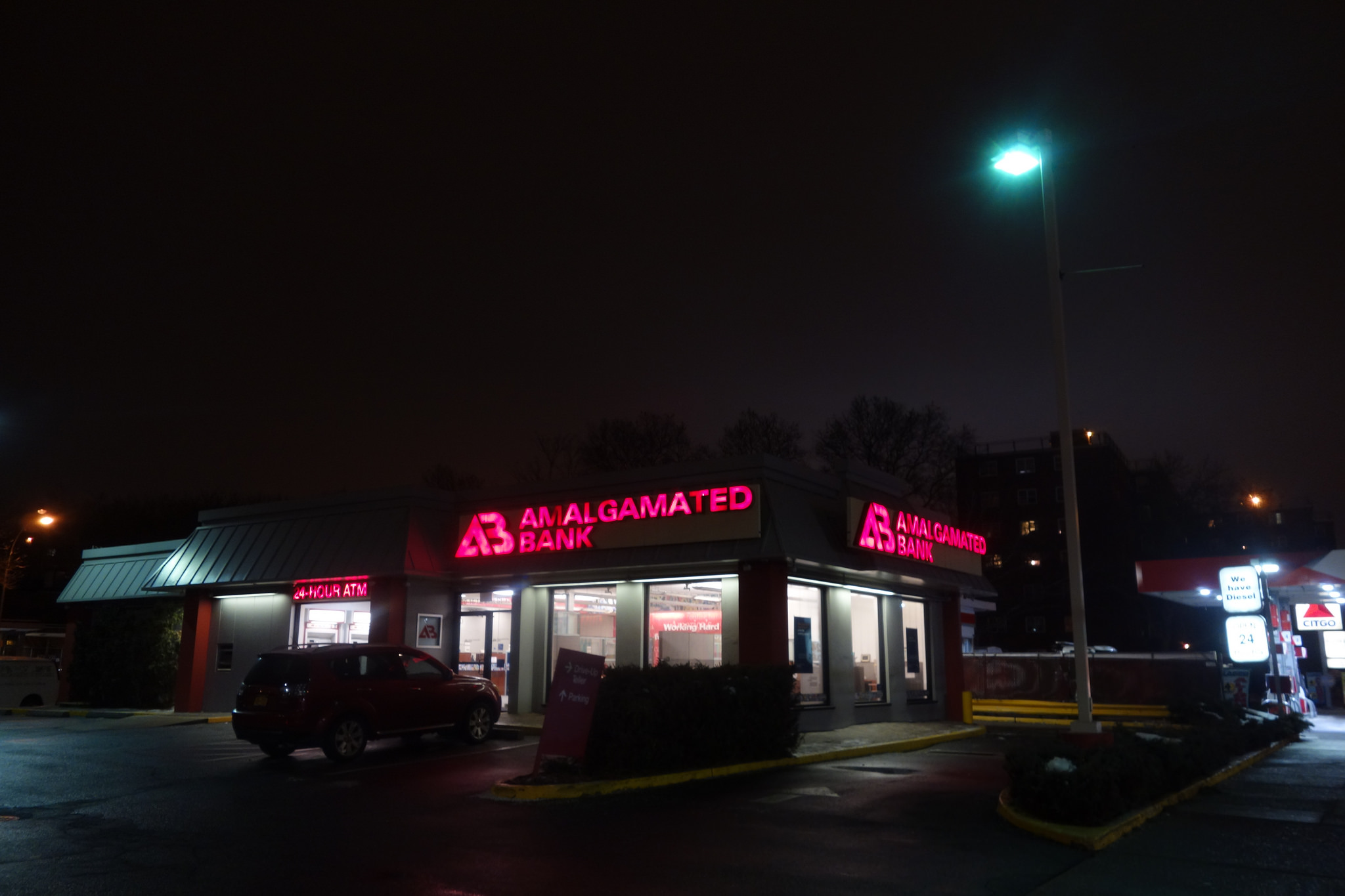
March 3, 2015
Whenever C. Gurung leaves her house in Woodside, Queens, she starts to worry. A 36-year-old immigrant from Nepal who arrived in the US eight months ago, Gurung doesn’t yet have the forms of ID required to open a bank account. Instead, all her money is stashed away in her home. “It’s my hard-earned money, and every time I’m outside the house, I’m worried someone will rob me,” she said. “If I had a bank account, I wouldn’t have that stress.”
In order to cash the paychecks she earned first as a deli worker and now as a nanny, Gurung resorts to check-cashing services, which costs $5 for each transaction; she estimates she’s spent $300 on those fees so far. Without a bank account, she can’t begin to build her credit history—which she needs to fulfill her dream of one day buying a house in Queens.
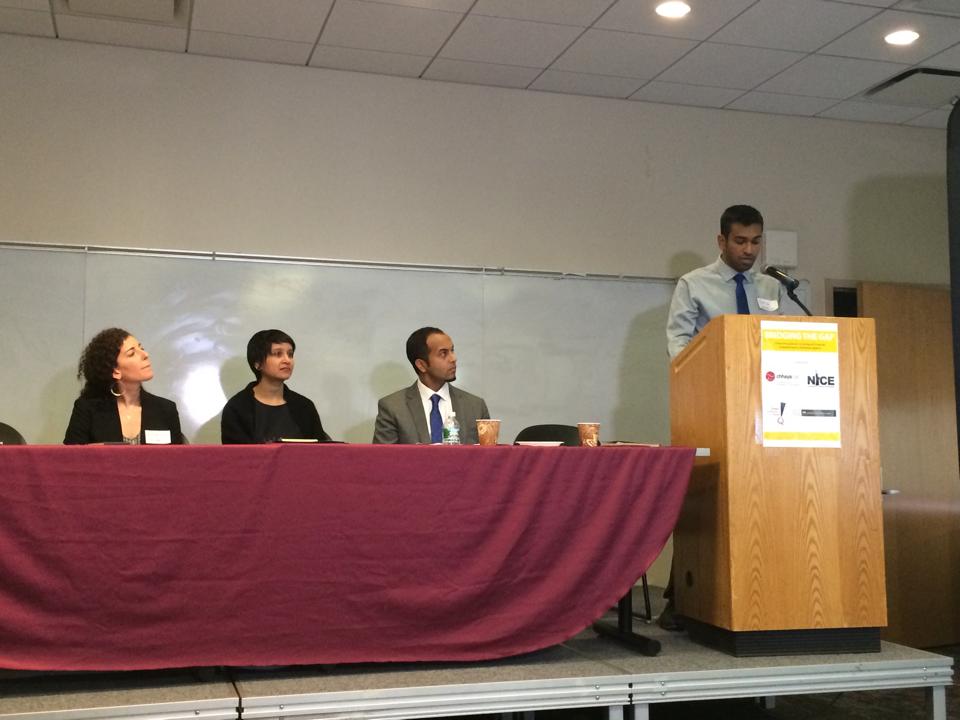
Empowerment in Northwest Queens,” on February 25. (Photo courtesy of Chhaya)
Gurung was one of 253 Latino, Bangladeshi, Nepalese, and Tibetan immigrants in northwest Queens who were interviewed for a new report describing the struggles immigrants face in building wealth and managing money. Her story was highlighted last week at the release of the report, titled “Bridging the Gap: Overcoming Barriers to Immigrant Financial Empowerment in Northwest Queens,” authored by a coalition of four groups that work with new immigrants in the borough.
The report’s findings show that many barriers, including a strong distrust of banks, persist in many immigrants’ access to mainstream financial institutions. According to the report, these hurdles are pushing Latino and South Asian immigrants in Queens to alternative—and sometimes predatory—financial services.
Although saving is a common practice among the immigrants surveyed (90 percent said they put aside money to save each month), almost half have closed or abandoned bank accounts because of hidden or excessive fees, or a negative balance. Lack of non-English language services also remains a barrier, especially for the South Asians surveyed: 40 percent of Bangla speakers and 70 percent of Nepali/Tibetan speakers said banks didn’t offer services in their language.
As a result of these challenges to banking, immigrants are continuing to use alternative financial services. Almost one third of those surveyed prefer check cashing or remittance agencies to banks or credit unions, and almost half of those who prefer “fringe” services say it’s because they allow more immediate access to money.
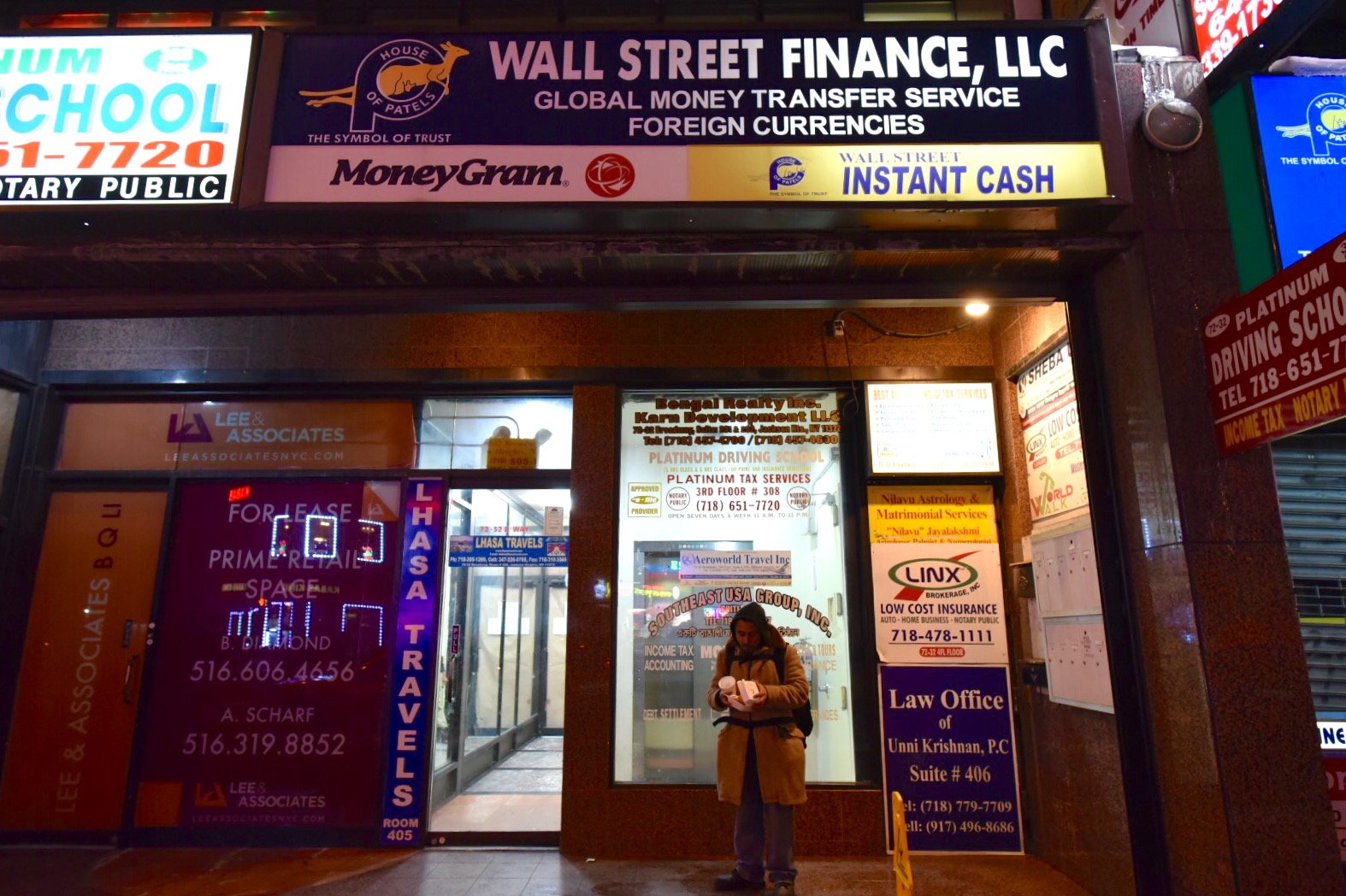
Nepalese and Tibetan communities in the neighborhood. (Photo by Thomas Kung)
“We’re seeing a lot of that, using informal financial services, completely outside of institutions,” said Nancy Castillo, a manager at the US Financial Diaries, which tracked over 200 low- and moderate-income households (a third of which were immigrants) across the country over the course of a year, collecting highly detailed data on how families manage their finances on a day-to-day basis.
“People are really struggling to make ends meet and having to do it with multiple income sources, and irregular, volatile hours,” Castillo said at the report briefing explaining that a poor fit between bank policies and immigrants’ finances pushes individuals to these alternative services. “It’s a lot for a household to manage. So when you have really strict financial services, like a bank account with a certain minimum deposit or direct deposit, one can see why that just doesn’t work for people’s lives.”
What does seem to work is saving money informally by keeping it at home and also participating in lending circles with friends or coworkers. “We see people borrowing and lending from each other all the time,” Castillo said, noting that it’s more prevalent among immigrants than the American born. And, Castillo sees these informal services working well: “That kind of relationship provides a structure, a flexibility that people really need to make ends meet and be able to do things they want to do.”
Saving is a common practice among the immigrants surveyed, but almost half have closed or abandoned bank accounts because of hidden or excessive fees, or a negative balance..
Imtiaz Hossain heard about Gurung, the Nepalese immigrant without a bank account, through his work as economic development manager at Chhaya, a South Asian community development group based in Jackson Heights. It’s a story he hears often. “Where banks are lacking those essential services and means to really understand immigrant communities, other predatory services are taking over,” he said in an interview.
But he echoed Castillo’s sentiment that not all “fringe” financial services are necessarily predatory: Hossain calls them “a means to an end” when banks and other mainstream financial services aren’t accessible. “Check cashing services and remittance services are a real source of assets because those are the only pathways that some of the immigrant communities can conduct their transactions and business,” he said.
In fact, informal finance structures often help immigrants make real financial progress, according to Castillo. She described one Columbian immigrant from Queens who saves $200 a week in a group of her coworkers. “She’s saving 26 percent of her monthly income—that’s substantial,” Castillo said.
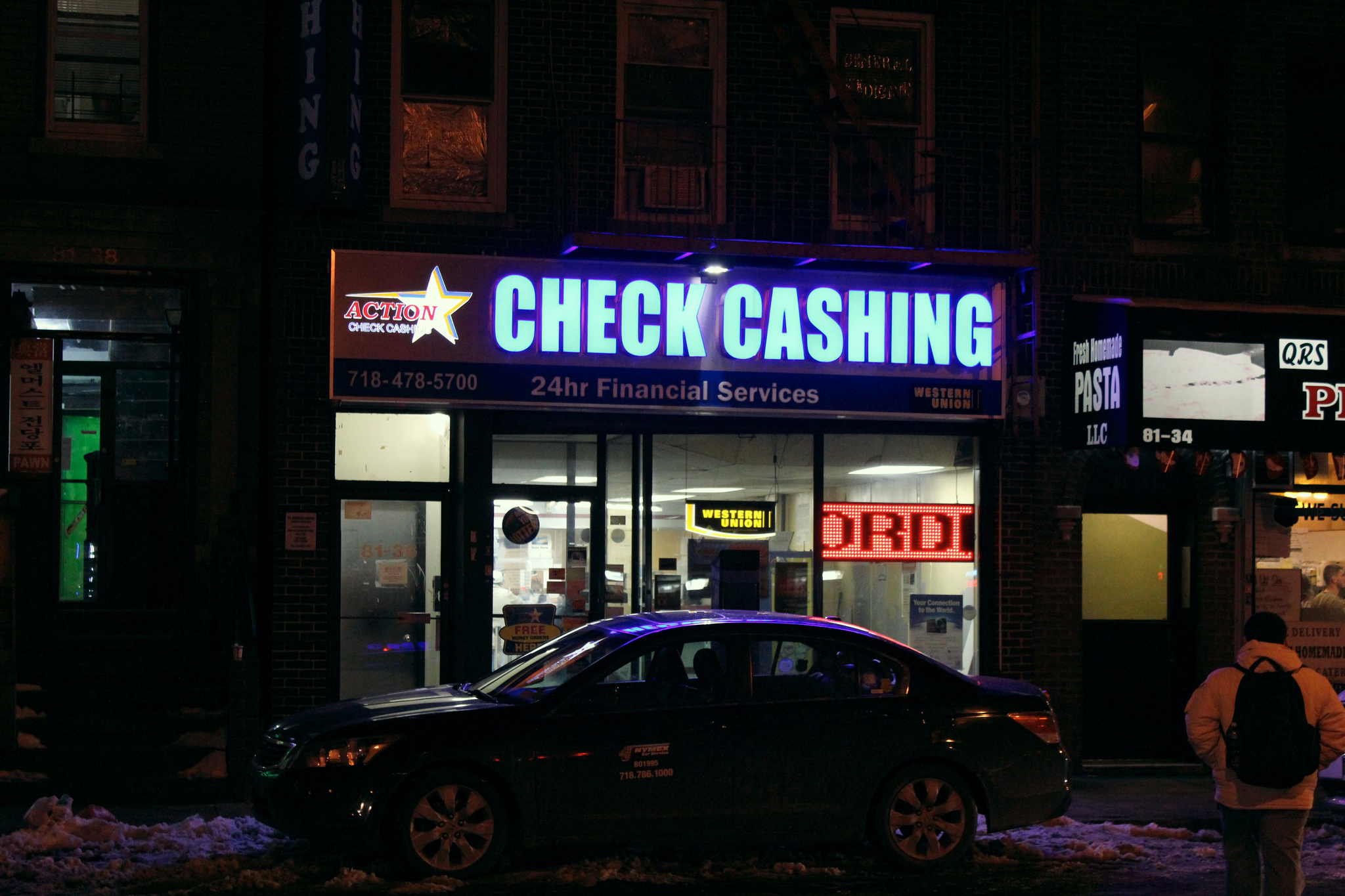
The end goal isn’t for everyone to have a bank account, Hossain said. “We’re not making judgments in services. We’re saying this is how it is, let’s face it. It’s because the mainstream financial providers are lacking certain cultural competencies and language access. We’re calling on public officials and government agencies to hold these bodies more accountable and really invest in the communities where they do their business.”
Immigrants have long struggled for access to banks, Weisberg noted in an interview, and rising fees and changes in overdraft policies over the years have kicked a lot of people out of the banking system.
Ensuring that banks are responsive to communities is part of the job of New York City’s Responsible Banking Act, which is one of the strongest such statutes in the nation. Passed by the City Council in 2012, it creates a new level of transparency around the city’s banks: any bank that holds city deposits must report on what they’re doing to help meet credit needs of low and moderate income New Yorkers. It also established an advisory board—made of city, community, and bank officials—to assess local needs in lower-income neighborhoods as well as how banks are helping meet those needs. “The RBA is advisory but I think through transparency and public accountability it really will raise the bar for banks in the city,” said Jaime Weisberg, a senior campaign analyst at the Association for Neighborhood and Housing Development, a membership organization of more than 90 New York City non-profit neighborhood housing groups.
Immigrants have long struggled for access to banks, Weisberg noted in an interview, and rising fees and changes in overdraft policies over the years have kicked a lot of people out of the banking system. But she does see glimmers of progress from the report. For example, the report found that 73 percent of those surveyed had a checking or savings account in a bank. “What I find interesting is, in studies I read a couple years ago, more immigrants didn’t have accounts,” she said. “This [report] found many did but then either closed them or aren’t using them much.” She attributes that to banks’ loosening of strict ID requirements and increase in accepting alternate forms of ID to open accounts in recent years.
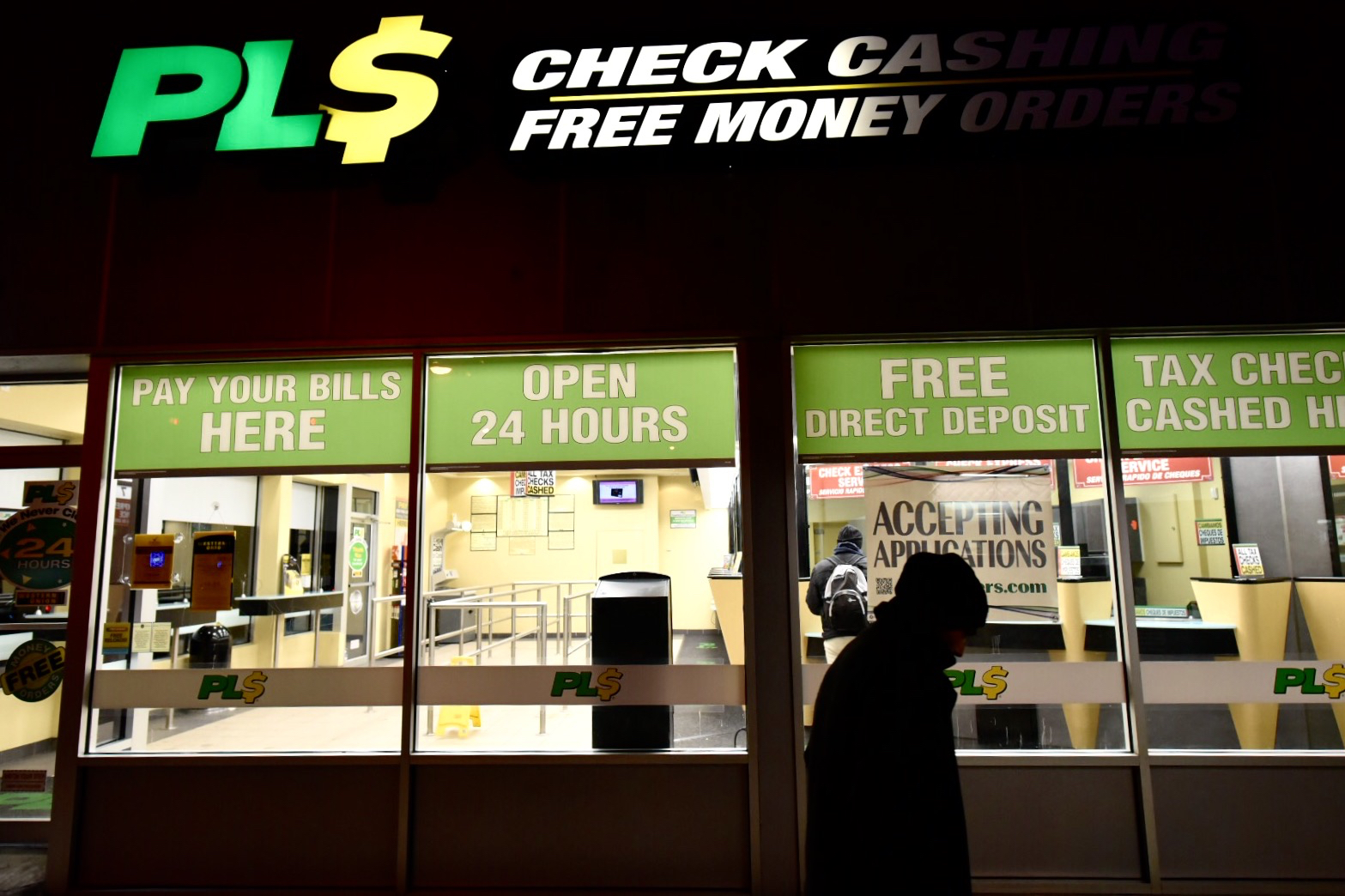
That’s why many immigrant advocates are hoping that the city’s new municipal identification card will bring even more immigrants through banks’ doors, while they continue to push for more banks to accept it as a primary form of ID to open an account. “This was a goal of the ID program from the outset,” said Nisha Agarwal, New York City’s Commissioner of Immigrant Affairs, at the briefing, adding that IDNYC is now accepted at a dozen banks and credit unions, and her office is continuing to push for even wider acceptance.
Banks must also improve on being culturally sensitive to the norms and practices of immigrant consumers, the report notes. “It’s understanding the income instability, underemployment, unemployment, the high degree of volatility that an immigrant consumer faces,” Hossain said. Income instability is the financial issue his group sees most often, since many of Chhaya’s constituents are new immigrants who do service, hospitality, and low-wage work. “The financial can never be really separated from other aspects of life. It’s about [banks] not having just a mindset of fast-turnaround, opening and closing accounts. It needs to be more holistic and comprehensive to really understand the multiple layers of struggles immigrants, and other low-income New Yorkers in general, usually face.”
Better access for non-English speakers isn’t only a matter of social justice: it’s just good business for banks in New York City, according to Agarwal. She praised the report for “highlighting the importance of banks being attuned to their customer base” and hopes the financial industry will focus more on language access, “not just for the community but frankly for their own interest, given the diversity of the marketplace in New York City.”
Better access for non-English speakers isn’t only a matter of social justice: it’s just good business for banks in New York City, according to Agarwal.
Mayur Saxena, an assistant attorney general in the New York Attorney General’s Civil Rights Bureau, echoed that sentiment. “Language access is not just an issue of discrimination—it is a customer service issue for a bank,” he said at the briefing. He added that, in comparison to robust laws that mandate language access in places like hospitals or pharmacies that receive federal funding, “unfortunately the laws governing banks are not as strong.”
But more in-language services may not actually translate to more immigrants using banks: even though 93 percent of Spanish-speaking respondents said they knew of banks offering services in Spanish, they were less likely to have a bank account than speakers of other languages. Forty percent did not have a checking or savings account at a bank. Agarwal said this really stood out to her as notable: “Despite there being relatively greater amounts of Spanish-language access, there were still low banking rates in Spanish-speaking communities.”
Weisberg attributed that disparity in part to how bank products are marketed in those communities, and partnering with community organizations is key “so that there are people trusted in the field that know the products and can help people decide if this is right or wrong for them.” The report spotlights community-based organizations as the best places for immigrants to improve financial literacy, through one-on-one counseling, peer lending circles, educational workshops, tax assistance, legal clinics, and wage-theft prevention programs. These programs, which are offered by the partner organizations that produced the report (Queens Community House, New Immigrant Community Empowerment, and Chhaya), help break down the “information barrier” immigrants face, Hossain said. “Financial literacy is really skill building, in a sense. Even people who have spent all their lives dealing with these kinds of issues may be flustered by financial jargon.”
“It is very inconvenient and unsafe to carry cash every time I go shopping,” Gurung said.
Offering products that meet the community’s needs is also vital to attracting immigrant consumers, Weisberg noted—low-minimum balance or no-fee accounts, for example. Citibank, for one, has never allowed overdrafts at ATMs or in debit transactions. “In terms of blanket policies, that’s the gold standard,” Weisberg said. Citibank also recently began offering checkless checking accounts that have no overdraft fees at all, and it was one of the first banks to provide funding for a lending circle. On the city side, New York City has a program that helps new employees get set up with direct deposit immediately so they can automatically have access to a free checking account.
But many immigrants like Gurung remain shut out of bank services. “It is very inconvenient and unsafe to carry cash every time I go shopping,” she said. “I wish I had a debit or credit card so shopping is easy, safe, and fun.” Friends have offered to deposit her money in their accounts, but she worries she will have trouble accessing that money when she needs it.
Gurung is looking forward to receiving her New York municipal ID in the next few months. The document–called IDNYC–is required for her to open both bank and credit card accounts. Besides buying a house, she also dreams of continuing her education. “But these are dreams I can only achieve that dream once I have my bank account.”



